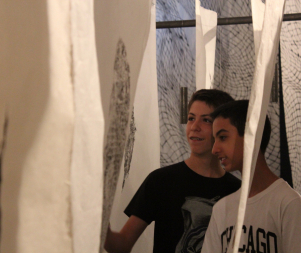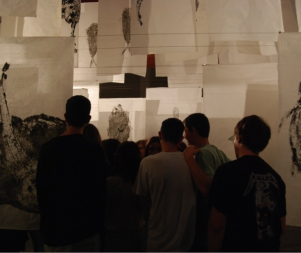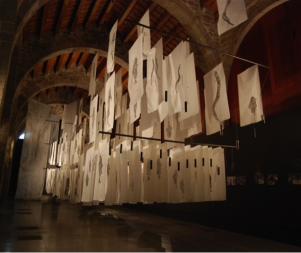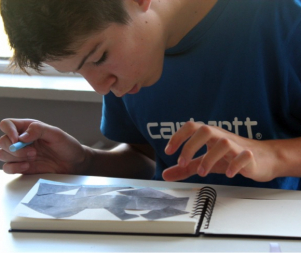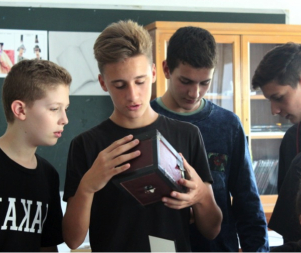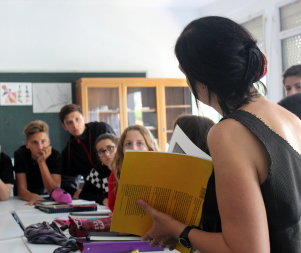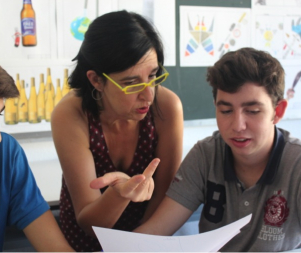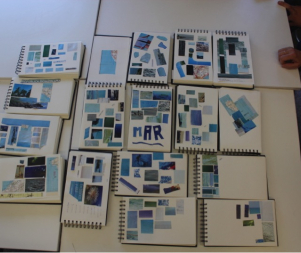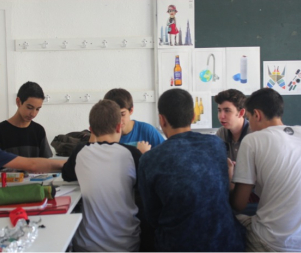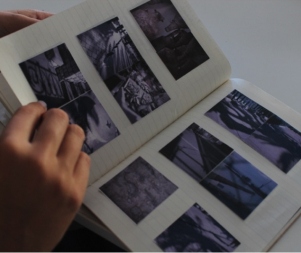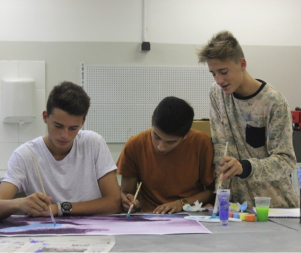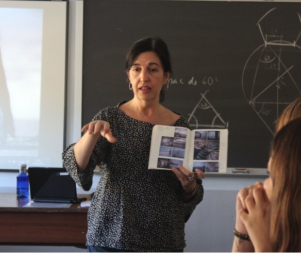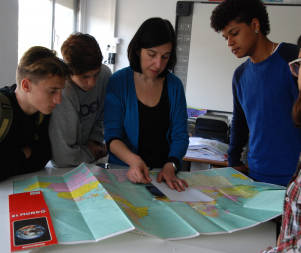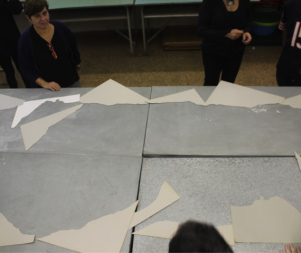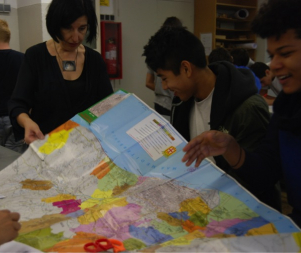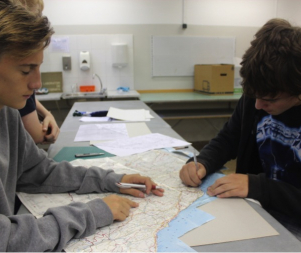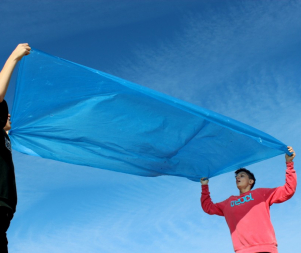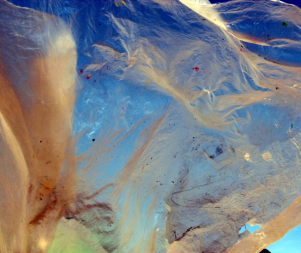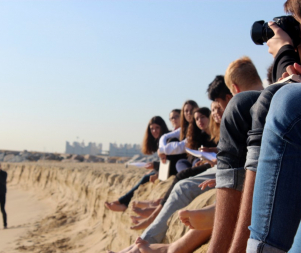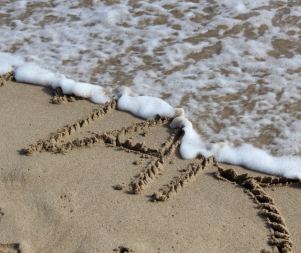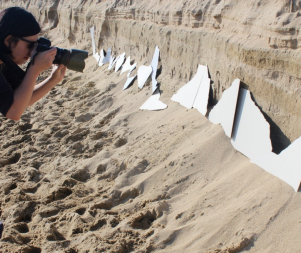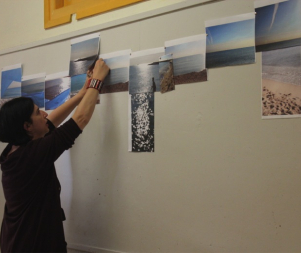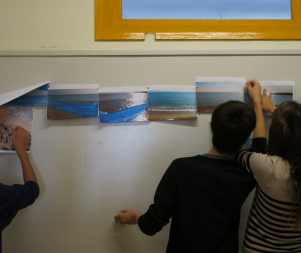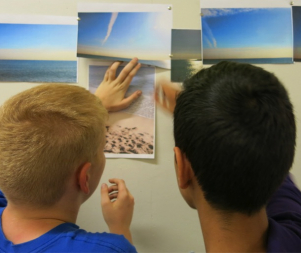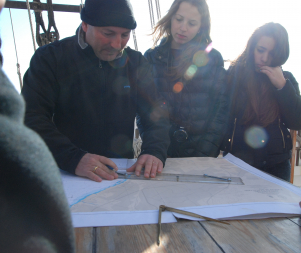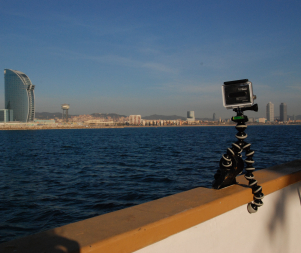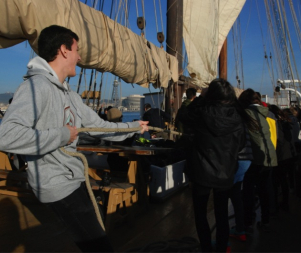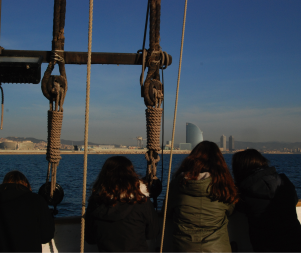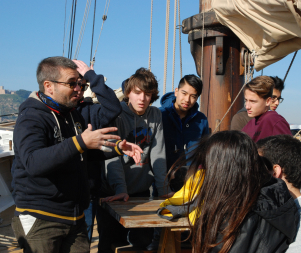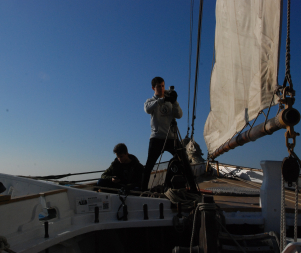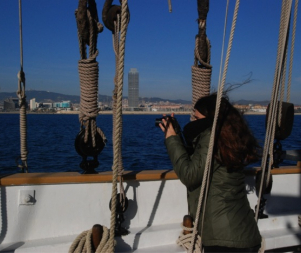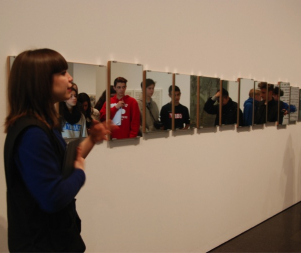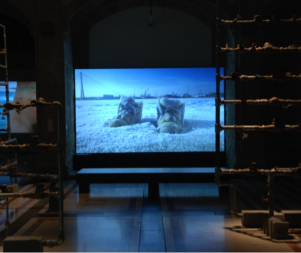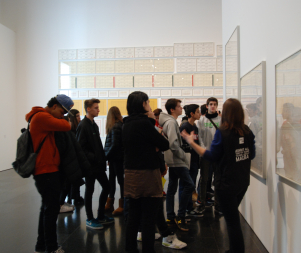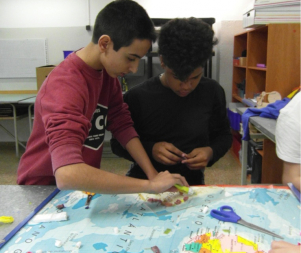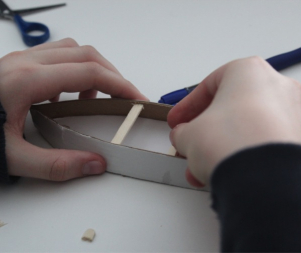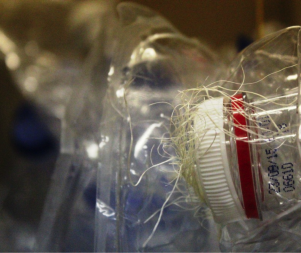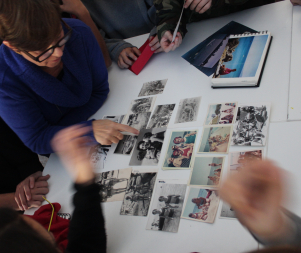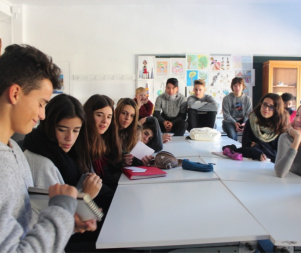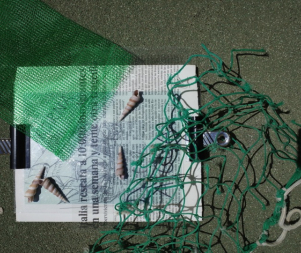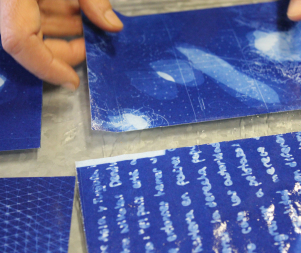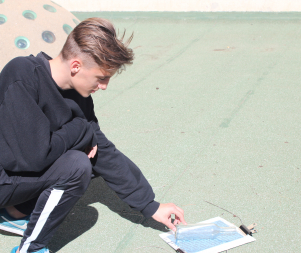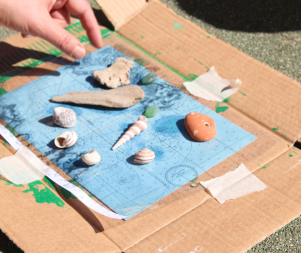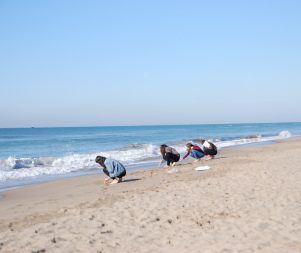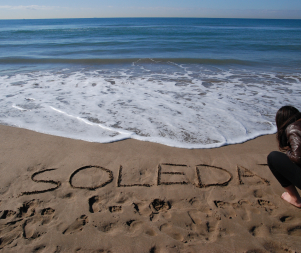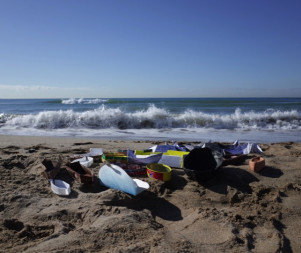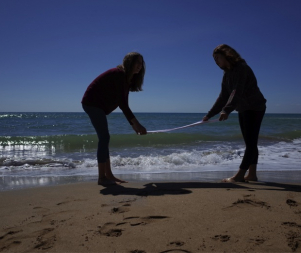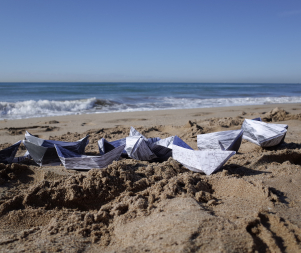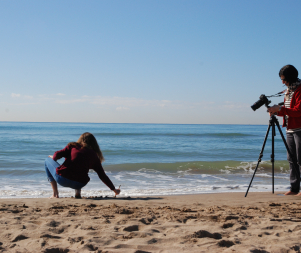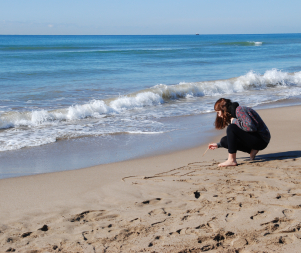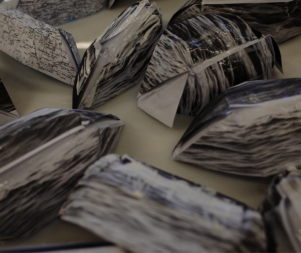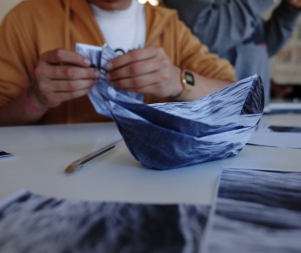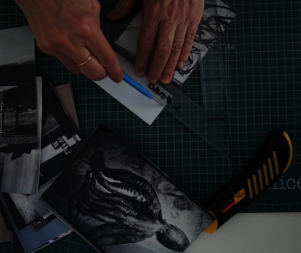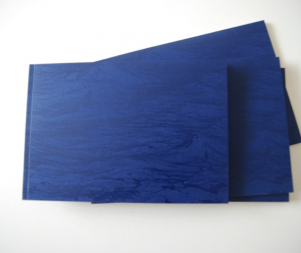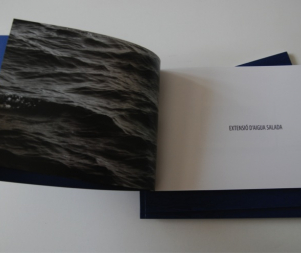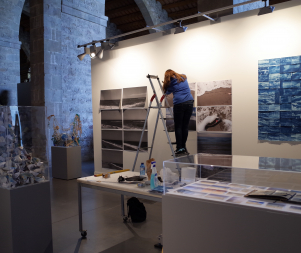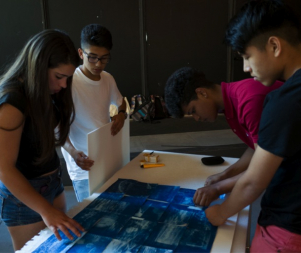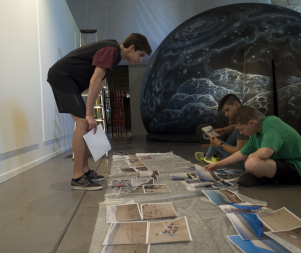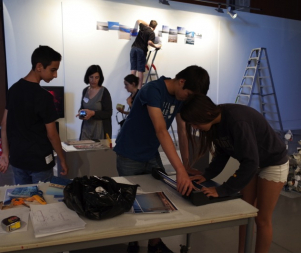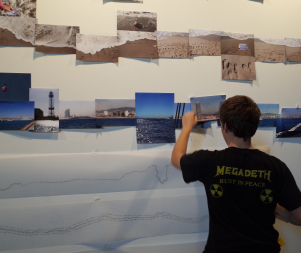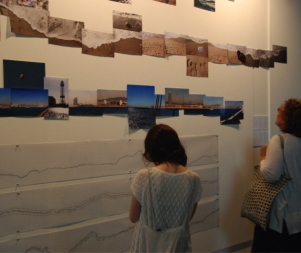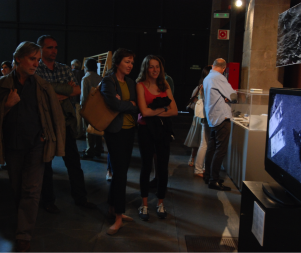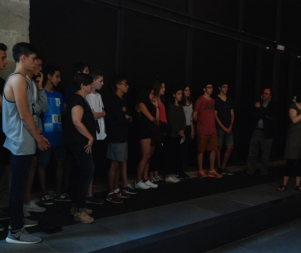- 14th EDITION 2022 / 2023
- 13th EDITION 2021 / 2022
- 12th EDITION 2020 / 2021
- 11th EDITION 2019 / 2020
- 10th EDITION 2018 / 2019
- 9th EDITION 2017 / 2018
- 8th EDITION 2016 / 2017
- 7th EDITION 2015 / 2016
- 6th EDITION 2014 / 2015
- 5th EDITION 2013 / 2014
- 4th EDITION 2012 / 2013
- 3rd EDITION 2011 / 2012
- 2nd EDITION 2010 / 2011
- 1st EDITION 2009 / 2010
Mònica Roselló IN RESiDENCE at the School Joan Boscà
VISIT TO THE EXHIBITION GYOTAKU AT THE MARITIME MUSEUM
The first session in the residency was devoted to a visit to the exhibition Gyotaku at Barcelona Maritime Museum, guided by the artist Victòria Rabal. The visit, which was made without the presence, yet, of Mònica Roselló, was the group's first contact with an art project linked to the sea.
The group also visited the rest of the museum, as well as the schooner Santa Eulàlia in the port.
The main themes of this exhibition, presented by the artist, are the sea and fish, and the show provides a good starting point for understanding what an art project is and the forms it can take.
The link established with the Maritime Museum at the very start is one of the strong components of the project throughout the course.
http://blocsenresidencia.bcn.cat/joanbosca1415/?p=48
FIRST SESSION
The first sessions with Mònica Roselló are centred on enabling the group to discover the work of this photographer and to understand what a photography project is. At the same time, the group begins to work on their “artist's notebooks”, where they can express their creative ideas, make sketches, etc. There is also a reference to the history of photography, as the group are shown an old camera and learn how it works.
EXTENSION OF SALTWATER
The sea is the theme of this creative process. To begin, Mònica proposes the project title, explaining the dictionary definition of the word. They discuss the process, which will entail looking at the sea in different ways, using a range of resources, generating thought and works using different media, but always taking photography as the main support for their work.
A PROJECT
An art and photography project: discovering ways of working on a photography project. Mònica Roselló presents her work and her notebooks, in which she sketches the whole creative process. A large photograph of the sea is chosen as the starting point for creating an art work which each group produces using the technique of its choice (painting, text or collage).
PROFILES OF THE COAST
A way of approaching the sea is from the coast. With the idea of tracing the geographical border with the sea, the group proposes to generate, through mapping, profiles of non-existent because they are juxtapositions of different coasts at different scales. With these profiles, as a task that will be developed throughout the process, the group are invited to select literary texts related to the sea, writing them down along these invented lines.
FIRST VISIT TO THE BEACH
Approaches to the sea are the central theme of the entire project. Accordingly, several trips are organised, two of them to the beach. The first approach to the sea is physical. The group visits Barcelona's Mar Bella beach to complete a series of tasks: to observe the movement of the waves, the meeting with the land, the wind; to throw objects into the sea to discover how they return; and so on. During this visit to the beach, the group practices taking photographs of the horizon, with the aim of generating a new photographic horizon. Some of the activities are also filmed.
The second trip is to Gavà beach, where the group complete several tasks, including a photographs exploration of the limit between the sea and the land.
http://blocsenresidencia.bcn.cat/joanbosca1415/?p=187
DRAWING THE LINE OF THE HORIZON
The group generates a new horizon using the printed photographs, joining the different lines of the horizon in them in an editing work on the wall of the corridor at the school, just outside the classroom. The whole group takes part in the editing work, and decisions are taken through general agreement.
TRIP ON THE SCHOONER SANTA EULÀLIA
Barcelona Maritime Museum organises a trip especially designed for the group to enable them to learn about the work of sailing a ship and, in a new practice, to photograph and film the city from the sea. The trip takes the group along the coast from the River Llobregat to the River Besòs and back. Before the group sets sail on the schooner, a member of the museum staff visits the school to give a session devoted to navigation using historic instruments.
http://blocsenresidencia.bcn.cat/joanbosca1415/?p=729
VISIT TO MACBA AND THE TEMPORARY EXHIBITION DEVOTED TO SIGALIT LANDAU
The group visits MACBA, following a specific route to see certain works related to the sea, as well as others on the theme of mapmaking.
The group also takes this chance to visit the temporary exhibition La dansa fenícia de la sorra [The Phoenician Sand Dance], by Sigalit Landau, since the artist's theme is the sea, and his way of dealing with the subject is similar to the approach taken by Mònica Roselló.
THINKING ABOUT THE SEA IN NEW WAYS
Based on the photographic exploration of the theme, the group is invited to make another approach through the prism of current affairs in order to see different problems related to the sea. As a result, the group studies migratory movements, particularly recent deaths in the Mediterranean, as well as the island of plastic waste in the Pacific Ocean and the pollution of the sea in general. These activities inspire actions that will later be put into practice on the beach.
FAMILY ALBUM OF THE SEA
Parallel to the entire process, the artist suggests that the group could create family albums linked to the sea. Accordingly, part of each session is devoted to sharing photographs and memories with the rest of the group and to write texts that will be brought together with the photographs.
CYANOTYPE
Cyanotype is a photographic procedure used to condense many of the elements that have emerged over the course of the process. From private texts to news stories, objects found in the sea, pieces like nets and ropes linked to the world of navigation and fishing, maps and other representations. All this, with one superimposed over the other to gradually build up a shared history. Cyanotypes are conceived as of joint mosaics, like a collective work in which each member of the group contributes their own small fragment.
SECOND TRIP TO THE BEACH
The second trip is to Gavà beach, where the group complete several tasks, including a photographs exploration of the limit between the sea and the land.
One last physical contact with the sea is proposed in order to complete the exploration that has been conducted over the course of the residency. Whilst the other outings were concerned with generating a gaze towards the horizon and the coast, respectively, on this occasion the group is asked to pay special attention to observing and experimenting with the diffuse limit between the sea and the land, a limit that is constantly drawn and erased. Some of the other activities proposed at other moments during the course are also repeated, and these are photographed and recorded.
http://blocsenresidencia.bcn.cat/joanbosca1415/?cat=18
THE THOUSAND CRANES
Based on the story of Sadako Sasaki, who made a thousand origami cranes to cure himself of the illness caused to her by the atomic bomb, and who became a symbol of peace, the group decides to make one thousand origami models of the precarious boats used by migrants to make a shared wish for the end of all the deaths in the Mediterranean.
PUBLICATION
A booklet is produced.
INSTALLING THE EXHIBITION
The pupils are involved in staging the exhibition in one of the naves of Barcelona Maritime Museum, both in its design and its installation. The different tasks are shared out and a schedule is drawn up for the installation teams, so that each group is in charge of assembling and installing part of the exhibition.
FINAL PRESENTATION AND GUIDED TOUR
The exhibition is presented at Barcelona Maritime Museum in an event attended by teachers, members of the participants' families and other visitors. The museum director speaks to the gathering, after which the pupils present the show with Mònica Roselló. The pupils act as guides for a number of tours of the show, explaining the process behind it.

